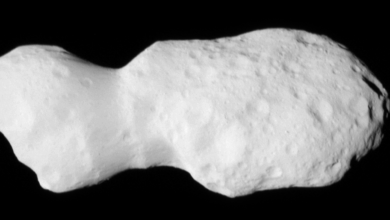Filmmaker James Cameron on penguins, arctic cold, and lowlight cameras
Secrets of the Penguins,” a new documentary series executive produced by James Cameron, takes viewers on a breathtaking journey into the world of Emperor penguins. The series, which represents the culmination of a two-year expedition around the globe, features never-before-seen footage of these iconic flightless birds in their natural habitats.
The team behind “Secrets of the Penguins” braved extreme conditions to capture the lives of these majestic creatures. In Antarctica’s Ekström Ice Shelf, a three-person film crew spent 274 days documenting a 20,000-strong Emperor penguin colony. The resulting footage includes scenes of chicks navigating drift ice, penguins using their beaks to climb out of crevices, and even a bonded pair of adults practicing rolling a future egg using a snowball stand-in.
While James Cameron did not personally endure the freezing temperatures for this project, he played a crucial role in editing down the hundreds of hours of footage into the final three-part series. He commended the team for their use of cutting-edge drone technology, including DJI drones, GoPro cameras, and Canon equipment, to capture stunning visuals of the penguins up close.
One of the most challenging aspects of filming in Antarctica was the unique sunlight conditions, with constant twilight for weeks at a time. The team used lowlight cameras to capture the penguins in this liminal environment, where the sun skims along the horizon before disappearing.
In addition to showcasing the wonder of nature, “Secrets of the Penguins” also touches on the impact of climate change on these vulnerable creatures. While the series aims to present the beauty of penguins without overwhelming viewers with guilt about human behaviors, Cameron notes that the effects of warming temperatures were more noticeable than in previous seasons.
Overall, “Secrets of the Penguins” offers a rare glimpse into the lives of these fascinating birds and the challenges they face in a changing world. Through stunning visuals and captivating storytelling, the series highlights the importance of conservation efforts to protect these beloved creatures for future generations. The impact of climate change is being felt most strongly in the polar regions, according to experts. The rapid changes in temperature and environment are having a significant effect on the delicate ecosystems of the Arctic and Antarctic. Penguins, in particular, are facing challenges as their habitats shift and ice melts at an alarming rate.
Despite the grim outlook, the creators of “Secrets of the Penguins” are aiming to inspire hope rather than despair. The documentary series is designed to instill a sense of love and wonder for nature in viewers, especially the younger generation. By showcasing the resilience and adaptability of penguins in the face of adversity, the hope is that people will be inspired to take action to protect the environment.
Filmmakers Bertie Gregory, Ben Joiner, and Sara Matasik have captured stunning footage of Emperor penguins in Antarctica, showcasing their struggles and triumphs in a changing world. The images of penguin chicks waiting at the sea ice edge before their first swim serve as a poignant reminder of the challenges these animals face.
Director James Cameron believes that there are still many people dedicated to conservation and the celebration of nature. While he acknowledges that those in power may not always prioritize environmental protection, he remains optimistic about the potential for positive change. By raising awareness and inspiring awe in the natural world, Cameron hopes to encourage more people to take action to preserve it.
“Secrets of the Penguins” will premiere on April 20 on National Geographic, with all episodes available for streaming on Disney+ and Hulu the following day. The series promises to be a powerful reminder of the beauty and fragility of the natural world, and a call to action for viewers to do their part in protecting it for future generations. The Great Barrier Reef is the world’s largest coral reef system, stretching over 2,300 kilometers along the coast of Australia. It is home to a vast array of marine life, including over 1,500 species of fish, 400 species of coral, and countless other species of plants and animals. The reef is a UNESCO World Heritage Site and is considered one of the most biodiverse ecosystems on the planet.
The Great Barrier Reef is not only a stunning natural wonder, but it also plays a crucial role in supporting the livelihoods of millions of people. The reef is a major tourist attraction, drawing visitors from around the world who come to snorkel, dive, and explore its vibrant underwater world. Tourism on the reef generates billions of dollars in revenue for the Australian economy each year.
In addition to its economic importance, the Great Barrier Reef also provides crucial ecosystem services. The reef acts as a natural barrier, protecting coastal communities from storm surges and erosion. It also supports a wide variety of marine species, many of which are commercially important for fisheries.
However, the Great Barrier Reef is facing a number of threats that are putting its future at risk. Climate change is one of the biggest threats facing the reef, as rising ocean temperatures and ocean acidification are causing mass coral bleaching events. Coral bleaching occurs when corals expel the algae living in their tissues, causing them to turn white and eventually die. In recent years, the Great Barrier Reef has experienced several severe bleaching events, with large swathes of coral dying off.
Pollution is another major threat to the Great Barrier Reef. Runoff from agricultural activities, coastal development, and shipping can introduce harmful chemicals and nutrients into the marine environment, leading to algal blooms and disrupting the delicate balance of the ecosystem. Plastic pollution is also a significant problem, with plastic debris harming marine life and smothering coral reefs.
Overfishing is yet another threat to the Great Barrier Reef. Unsustainable fishing practices can deplete fish populations and disrupt the balance of the ecosystem. Bycatch, the accidental capture of non-target species, is also a major issue, with many species being inadvertently caught in fishing nets and traps.
Despite these threats, there is hope for the Great Barrier Reef. Conservation efforts are underway to protect and restore the reef, including the establishment of marine protected areas, the implementation of sustainable fishing practices, and the reduction of pollution. Scientists are also working on innovative solutions to help corals adapt to changing environmental conditions, such as breeding corals that are more resilient to heat stress.
The Great Barrier Reef is a precious natural resource that must be protected for future generations to enjoy. By taking action to address the threats facing the reef, we can ensure that this incredible ecosystem continues to thrive for years to come. The world of technology is constantly evolving, with new advancements and innovations being made every day. One of the most exciting developments in recent years is the rise of artificial intelligence (AI). AI has the potential to revolutionize industries, improve efficiency, and change the way we live and work.
AI is a branch of computer science that aims to create machines that can perform tasks that typically require human intelligence, such as speech recognition, decision-making, and problem-solving. These machines are programmed to learn from experience and adapt to new situations, making them incredibly versatile and powerful tools.
One of the most common applications of AI is in the field of automation. AI-powered robots and machines can perform tasks that would be too dangerous, tedious, or time-consuming for humans. For example, AI-powered drones can be used to inspect infrastructure, such as bridges and power lines, without putting human lives at risk. Similarly, AI-powered robots can be used in factories to assemble products quickly and accurately, improving efficiency and reducing costs.
AI is also being used to improve healthcare. AI-powered systems can analyze medical data, such as X-rays and MRI scans, to help doctors diagnose diseases more accurately and quickly. AI can also be used to develop personalized treatment plans for patients based on their unique genetic makeup and medical history.
In the field of transportation, AI is being used to develop self-driving cars and trucks. These vehicles use AI algorithms to analyze their surroundings and make decisions about how to navigate safely to their destination. Self-driving cars have the potential to reduce accidents, traffic congestion, and emissions, making transportation safer and more sustainable.
AI is also being used in the field of finance to detect fraud and make investment decisions. AI algorithms can analyze large amounts of financial data to identify patterns and anomalies that may indicate fraudulent activity. AI-powered trading systems can also make real-time decisions about buying and selling stocks, bonds, and other financial instruments.
While AI has the potential to bring about many benefits, there are also concerns about its impact on jobs and privacy. Some experts worry that AI-powered machines will replace human workers in many industries, leading to job losses and economic disruption. There are also concerns about the potential for AI systems to invade people’s privacy by collecting and analyzing personal data without their consent.
Overall, the rise of artificial intelligence is an exciting development that has the potential to revolutionize the way we live and work. By harnessing the power of AI, we can improve efficiency, enhance safety, and create new opportunities for innovation. However, it is important to proceed with caution and consider the ethical implications of AI as we continue to explore its possibilities.





